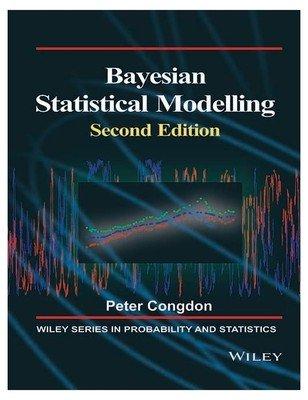2. Consider data from a meta-analysis of 11 studies by the US Environmental Protection Agency into lung
Question:
2. Consider data from a meta-analysis of 11 studies by the US Environmental Protection Agency into lung cancer risk from environmental tobacco smoke (Table 11.1 in Hedges, 1997). The studies were a mixture of cohort and case control studies, with effect sizes being log odds ratios and log risk ratios respectively. The observed effect sizes are y =
(0.405,−0.386, 0.698, 0.637, 0.247, 0.239, 0.148, 0.693,−0.236,−0.315, 0.278) with corresponding within study standard deviations s = (0.695, 0.451, 0.730, 0.481, 0.134, 0.206, 0.163, 0.544, 0.246, 0.591, 0.487). The USEPA analysis assumed τ 2 = 0 in a classical fixed effects meta-analysis and estimate μ as 0.17 with 95% CI from 0.01 to 0.33
(just significant at the 95% level in classical terms). Apply an analysis parallel to that in Example 5.1 to assess the validity of the fixed effects assumption regarding τ 2. Also apply the Albert-Chib (1997) discrete prior methodology including the option where τ 2 is effectively zero as one of the points (with prior mass 0.5). The third and seventh studies of the 11 were cohort studies, while the other nine used case-control designs. Apply a partially exchangeable meta-analysis with yi ∼ N(νi , s2 i )
νi ∼ N(μ[gi ], τ2[gi ]), where gi = 1 for case-control studies and gi = 2 for cohort studies. Assume μ1 ∼
N(0, 10), but consider an informative N(0, 0.1) prior on the likely gap, δ = μ2 − μ1.
What are the posterior probabilities for Pr(μ1 > 0|y) and Pr(μ2 > 0|y)?
Step by Step Answer:







